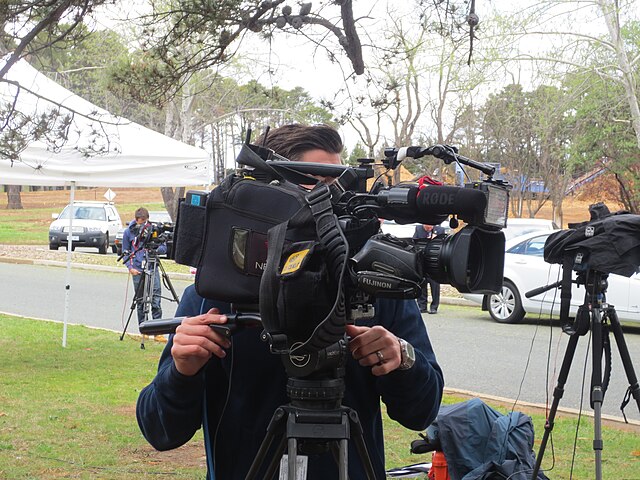Anamorphic format is the cinematography technique of shooting a widescreen picture on standard 35 mm film or other visual recording media with a non-widescreen native aspect ratio. It also refers to the projection format in which a distorted image is "stretched" by an anamorphic projection lens to recreate the original aspect ratio on the viewing screen. The word anamorphic and its derivatives stem from the Greek anamorphoo, compound of morphé with the prefix aná.
Anamorphic format
Figure 1. Shooting without an anamorphic lens, in widescreen picture format on 4-perf film; some of the upper and lower film surface area is wasted on the frame lines.
Figure 2. Shooting with an anamorphic lens stretches the image vertically to cover the entire film frame, resulting in a higher resolution but distorted image. When projecting the film, a reverse, complementary lens (of the same anamorphic power) shrinks the image vertically to the original proportions.
Example of blue-line horizontal anamorphic flare
Cinematography is the art of motion picture photography.
Arri Alexa, a digital movie camera
Georges Méliès (left) painting a backdrop in his studio
Live recording for TV on a camera with a Fujinon optical lens.
A deep focus shot from Citizen Kane (1941): everything, including the hat in the foreground and the boy (young Charles Foster Kane) in the distance, is in sharp focus.







